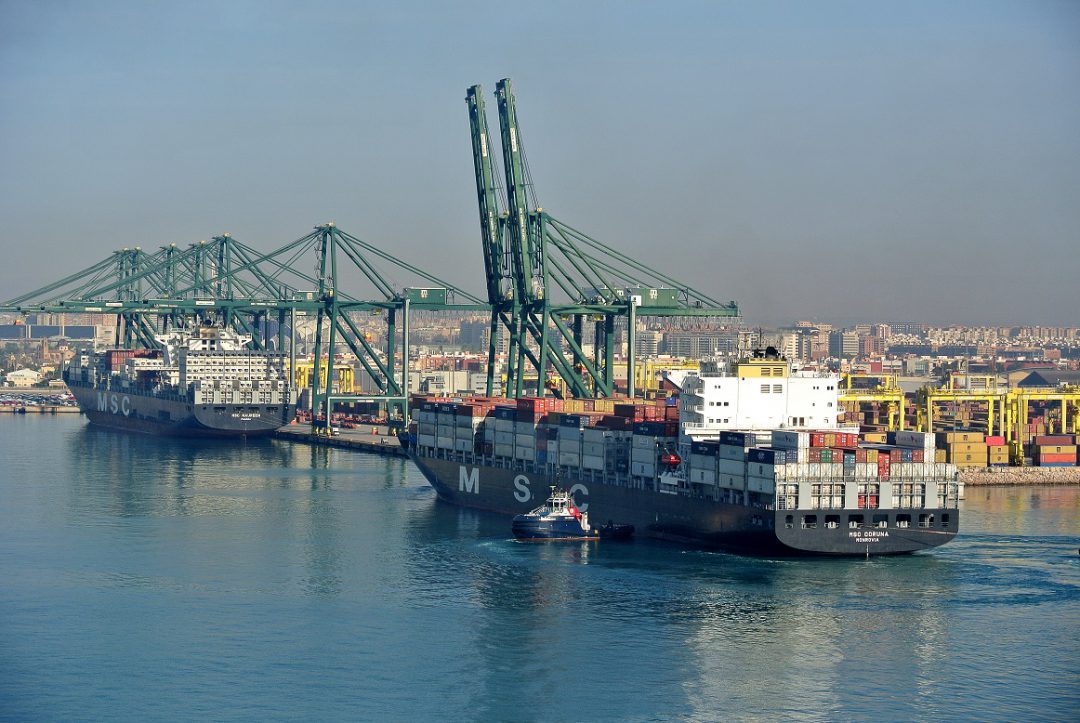The Valencia Containerised Freight Index i.e., VCFI, the indicator that measures the trend and evolution of container transport costs by sea from the Port of Valencia, stood at 3,743.95 points in October, which represents an increase of 5.23% over the previous month, making a chain of fifteen consecutive months of growth. Thus, since the beginning of the historical series in 2018, the VCFI has registered an increase of 274.39%. With regard to the analysis by areas, it should be noted that, as has been the case in recent months, the growth of the Index continues to be a common denominator in all of them, with the only exception of the Eastern Mediterranean, which suffers a slight decrease.
On the demand side, the revival of the external sector at all levels has been a key element in the global economic recovery, with merchandise trade surpassing pre-pandemic levels in the first half of 2021. This situation has led to a 10.8% improvement in trade forecasts for 2021 compared to 2020. This is also reflected in port traffic, which, according to the RWI/ISL Container Throughput Index produced by the Leibniz Institute for Economic Research, continues to rise, albeit with certain disparities. Thus, in recent months it has been marked, in part, by a clear seasonal component derived from the upcoming festivities.
On the other hand, the supply of capacity in the market remains high, with shipping lines using all available vessels and, consequently, the commercially inactive fleet remains at minimum levels. Thus, 45 vessels are idle, with a total of 124,919 TEUs (standard 20-foot containers) representing 0.5% of the total active fleet and showing a decrease compared to the level of idle fleet at the end of September when it stood at 159,714 TEUs.
Another determining factor in the growth of the Index is the average price of a barrel of European Brent crude oil, which has increased by 12.09% in October compared to the previous month, from 74.49 dollars in September to 83.50 dollars in the last reference month. As regards the price of bunkering (refuelling of ships at sea) in the 20 main ports of the world, according to the data offered by Ship&Bunker, the average price of IFO 380 (Intermediate Fuel Oil) has risen from 489 dollars in September to 515 dollars in October, which represents an increase of 5.31%. Similarly, VLSFO (Very Low Sulphur Fuel Oil) has increased by 9.02%, from 581.5 dollars in September to 634 dollars per tonne in October.
About the analysis of the thirteen areas that make up the VCFI, it is worth noting that the vast majority have experienced growth in freight levels. Among them, Central America and the Caribbean (+10.13%) and Latin America Pacific (+9.76%) stand out, followed by Africa West Coast, Latin America Atlantic and Africa East Coast. Beyond the factors that are common to all areas, such as the shortage of capacity and equipment, or the strong demand caused by the high season, it is worth making special mention of the routes from Valenciaport to the USA and Canada (where freight has risen by 5.53%). In this sense, according to the latest available data from the end of October, the congestion of ports such as Los Angeles-Long Beach continues to exceed its own record with more than 200,000 containers waiting to come into operation and more than 70 vessels paralysed. Similarly, the Port of Savannah, the fourth largest port in the US, is dealing with significant congestion problems reaching a peak of 28 waiting cargo vessels. Moreover, this scenario is compounded by the fact that export traffics from Valencia to the USA continue to show an upward trend, reaching levels higher than those of the same period in 2020 and even pre-pandemic levels in 2019.
VCFI Western Mediterranean
With regard to the Western Mediterranean sub-index, maritime export rates increased by 1.68% with respect to the previous month to 2,129.79 points. Although the main factors behind this rise are in line with the current situation, the good performance of Valenciaport’s traffic with this area also plays a determining role. Specifically, while exports from Valenciaport to Algeria have decreased in the last month, they continue to be above 2020 levels, although below pre-pandemic levels. For their part, exports from Valenciaport to Morocco, after months of decline, have experienced an upward spike in the last month, putting more pressure on freight rates with this area.
VCFI Far East
As regards the Far East sub-index, although it is true that in the month of September the level of freight rates showed a moderate decline, in October it returned to the upward path experienced during most of the year 2021 with a growth of 1.51% and reaching 3,684.52 points.
In this sense, the congestion problems in Chinese ports as a direct consequence of the different outbreaks of COVID-19, have been joined by the threat caused by both Typhoon Kompasu and the recent energy crisis, which has forced manufacturers to limit their activity at the same time as demand has increased. In addition, right in the middle of the peak shipping season, due to the proximity of Black Friday and Christmas, the “Golden Week” in China has taken place, so that the logistics industry has been slowed down for a week, resulting in service cuts by shipping lines and having a direct impact on already strained global supply chains.

























